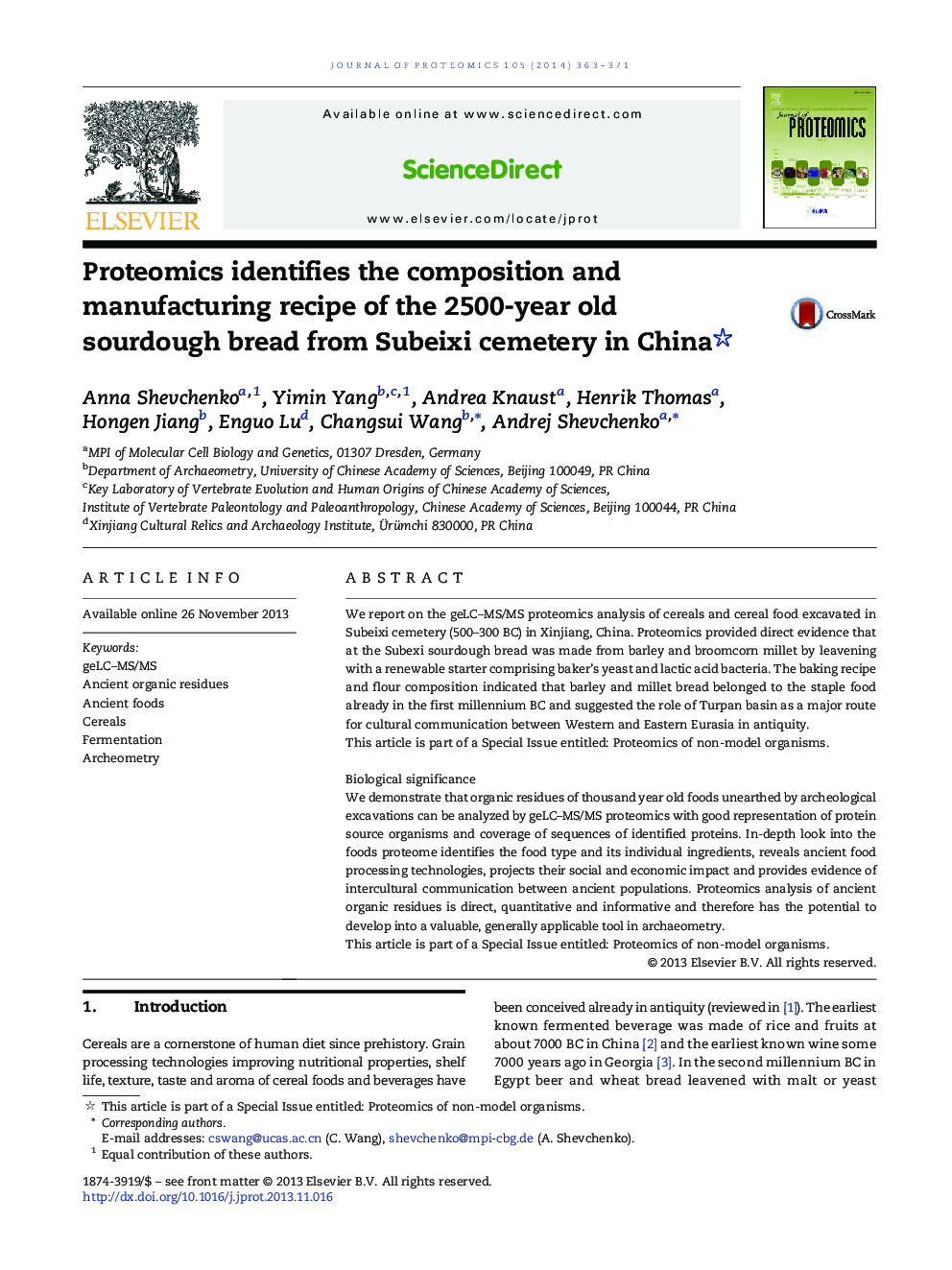| کد مقاله | کد نشریه | سال انتشار | مقاله انگلیسی | نسخه تمام متن |
|---|---|---|---|---|
| 1225167 | 1494775 | 2014 | 9 صفحه PDF | دانلود رایگان |

• Proteomics analysis of 2500-year old starch food from Subeixi, China.
• The food was identified as a sourdough bread made from millet and barley.
• Sourdough was made by fermenting with baker's yeast and lactic acid bacteria.
• Subeixi inhabitants used broom corn (but not foxtail) millet.
We report on the geLC–MS/MS proteomics analysis of cereals and cereal food excavated in Subeixi cemetery (500–300 BC) in Xinjiang, China. Proteomics provided direct evidence that at the Subexi sourdough bread was made from barley and broomcorn millet by leavening with a renewable starter comprising baker's yeast and lactic acid bacteria. The baking recipe and flour composition indicated that barley and millet bread belonged to the staple food already in the first millennium BC and suggested the role of Turpan basin as a major route for cultural communication between Western and Eastern Eurasia in antiquity.This article is part of a Special Issue entitled: Proteomics of non-model organisms.Biological significanceWe demonstrate that organic residues of thousand year old foods unearthed by archeological excavations can be analyzed by geLC–MS/MS proteomics with good representation of protein source organisms and coverage of sequences of identified proteins. In-depth look into the foods proteome identifies the food type and its individual ingredients, reveals ancient food processing technologies, projects their social and economic impact and provides evidence of intercultural communication between ancient populations. Proteomics analysis of ancient organic residues is direct, quantitative and informative and therefore has the potential to develop into a valuable, generally applicable tool in archaeometry.This article is part of a Special Issue entitled: Proteomics of non-model organisms.
Figure optionsDownload high-quality image (163 K)Download as PowerPoint slide
Journal: Journal of Proteomics - Volume 105, 13 June 2014, Pages 363–371